Figure shown a spring block system hanging in equilibrium. The block of system is pulled down by the distance x and imparted a velocity v in downward direction as shown in figure. Find the time it will take to reach its mean position. Also find the maximum distance to which if will move before returning back towards mean position.
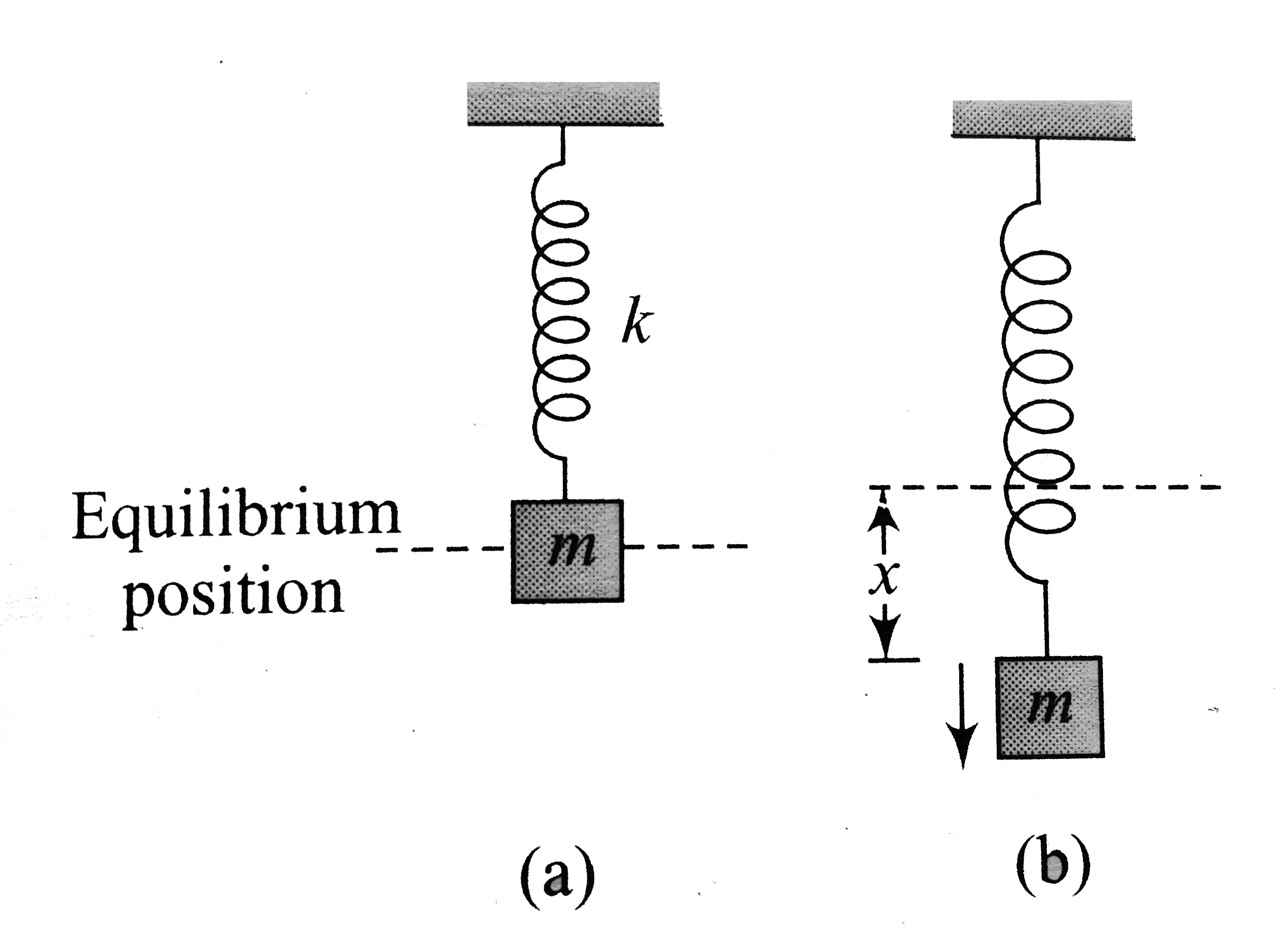
As shown in figure (b), when the block is pulled down by a distance x and throwndownward , it will start executting SHM. It will go further to a distance A (amplitude) from mean possion before returning back v at a displacement x from its mean position as
v=ω√A2−x2
or v2=km(A2−x2)
[as for spring block system ω=√km ltbr or A=√mv2k+x2)
Now timeof motion of bob can be obtained by circular motion representation of the respectiveSHM is shown in figure at t=0Att=0, block P is at a distance x force its mean position in downward direction and it is moving downwards so we can sider its corresponding circular motion partical in III quadrant as shown in reference angular velocity . We consider P will reach its mean position when partical P0 reaches position A by traversing an angle θ as shown in the figure.
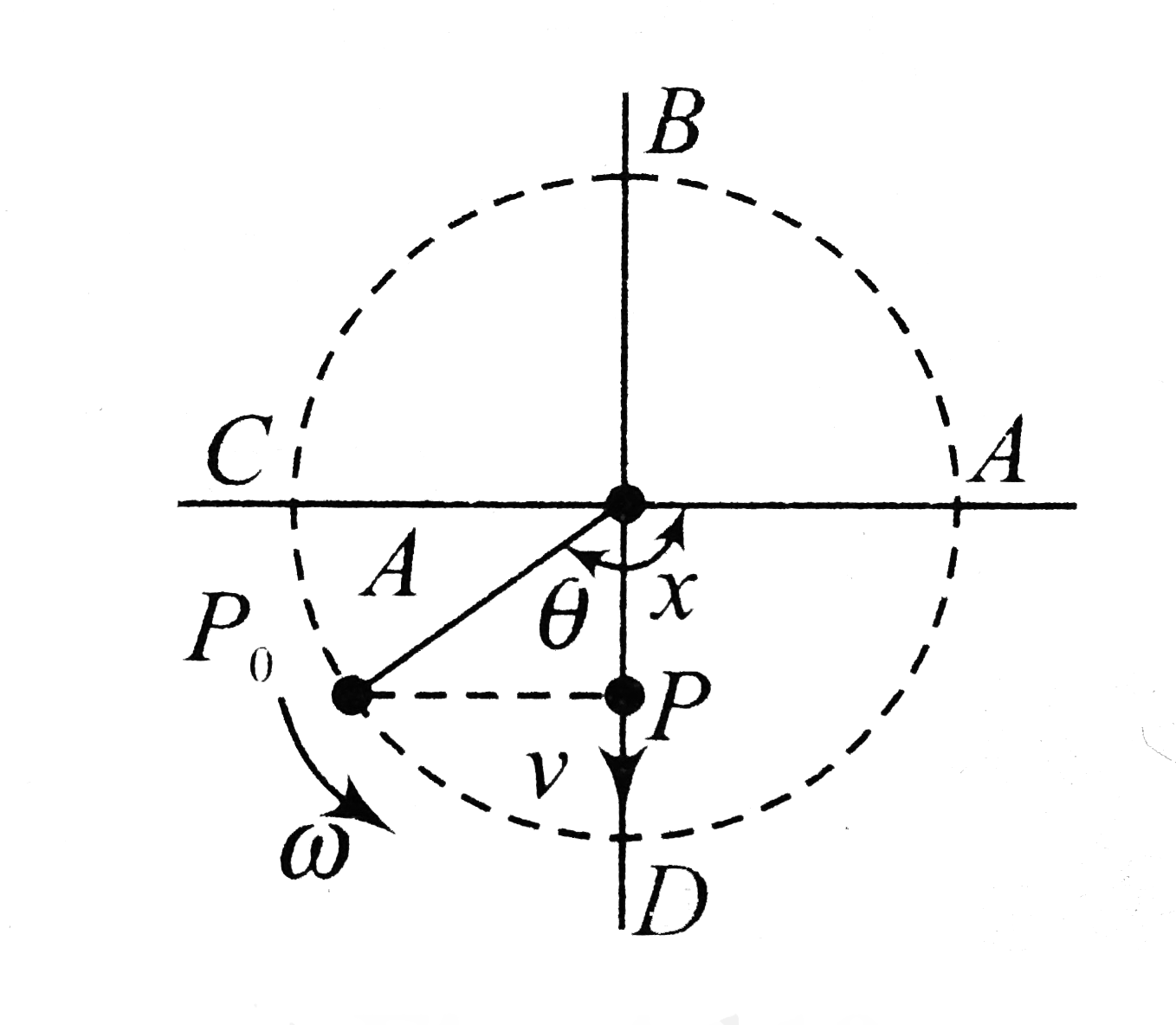
Thus it will take a time gives as t=θω=⎛⎜
⎜⎝π−sin−1⎛⎜
⎜⎝x/A√km⎞⎟
⎟⎠
or t=√mk⎡⎢
⎢⎣π−sin−1⎛⎜
⎜⎝x√mv2k+x2⎞⎟
⎟⎠⎤⎥
⎥⎦
The maximum distance to which block will move from its initial position is A−x as it gas upto its lower exterme at a distance equal to its amplitude A after to mean position.
Topper's Solved these Questions
- BOOK - CENGAGE PHYSICSCHAPTER - LINEAR AND ANGULAR SIMPLE HARMONIC MOTIONEXERCISE - Exercise 4.123videos
LINEAR AND ANGULAR SIMPLE HARMONIC MOTION
- BOOK - CENGAGE PHYSICSCHAPTER - LINEAR AND ANGULAR SIMPLE HARMONIC MOTIONEXERCISE - Exercise 4.223videos
LINEAR AND ANGULAR SIMPLE HARMONIC MOTION
- BOOK - CENGAGE PHYSICSCHAPTER - LINEAR AND ANGULAR SIMPLE HARMONIC MOTIONEXERCISE - Multiple Correct Answer Type9videos
LINEAR AND ANGULAR SIMPLE HARMONIC MOTION
- BOOK - CENGAGE PHYSICSCHAPTER - KINETIC THEORY OF GASES AND FIRST LAW OF THERMODYNAMICSEXERCISE - Interger11videos
KINETIC THEORY OF GASES AND FIRST LAW OF THERMODYNAMICS
- BOOK - CENGAGE PHYSICSCHAPTER - MISCELLANEOUS KINEMATICSEXERCISE - Interger type3videos
MISCELLANEOUS KINEMATICS
Similar Questions
Figure shown a spring block system hanging in equilibrium. The block of system is pulled down by the distance x and imparted a velocity v in downward direction as shown in figure. Find the time it will take to reach its mean position. Also find the maximum distance to which if will move before returning back towards mean position.
 View Solution
View SolutionFigure shown a spring block system hanging in equilibrium. If a velocity v0 is imparted to the block in downwards direction . Find the amplitude of SHM of the block and the time after which it will reach a point at half the amplitude of block
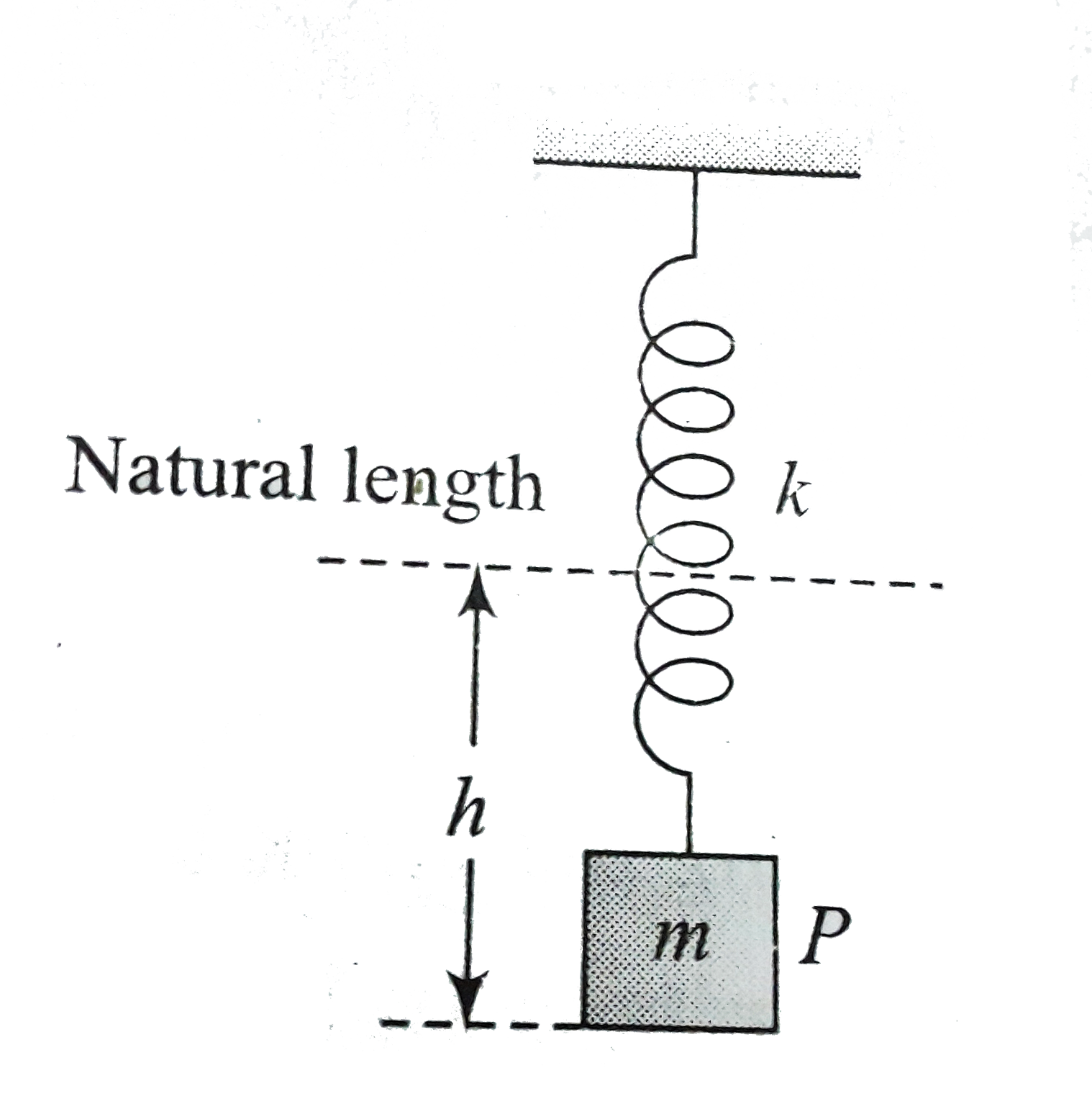 View Solution
View SolutionFind out the velocity of block B in a pulley block system as shown in figure.
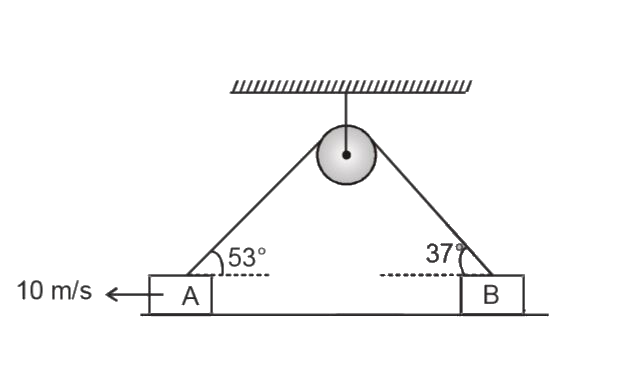 View Solution
View SolutionA block of mass m is placed on an inclined plane which is moving with constant velocity v in horizontal direction as shown in figure. Then find out work done by the friction in time t if the block is at rest with respect to the incline plane.
 View Solution
View SolutionA spring block pendulum is shown in figure . The system is hanging in equilibrium. A bullet of mass m/2 moving at a speed u bites the block from downwards direction and gets embedded in it. Find the amplitude of oscillation of the block now. Also find the time taken by the block to reach its upper extreme position after hit by bullet.
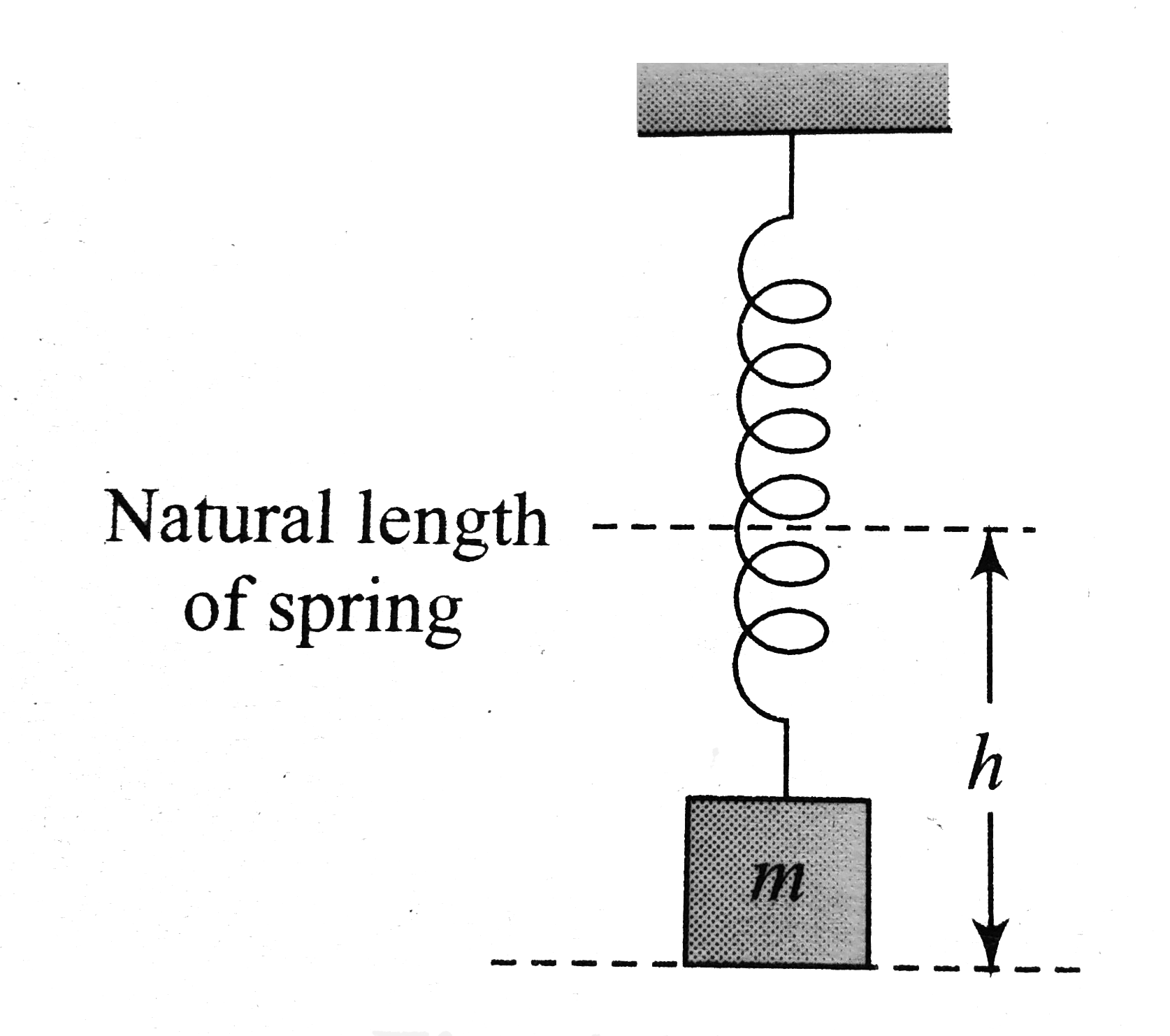 View Solution
View SolutionFigure shown a block P of mass m resting on a smooth horizontal ground, attached to one and a spring of force constant k in netural length. If another block od same mass and moving with a velocity u towards right is placed on the block on which stick to it due to friction ,find the time it will take to reach its exterme position. Also find the amplitude of oscillation of the combined mass 2m.
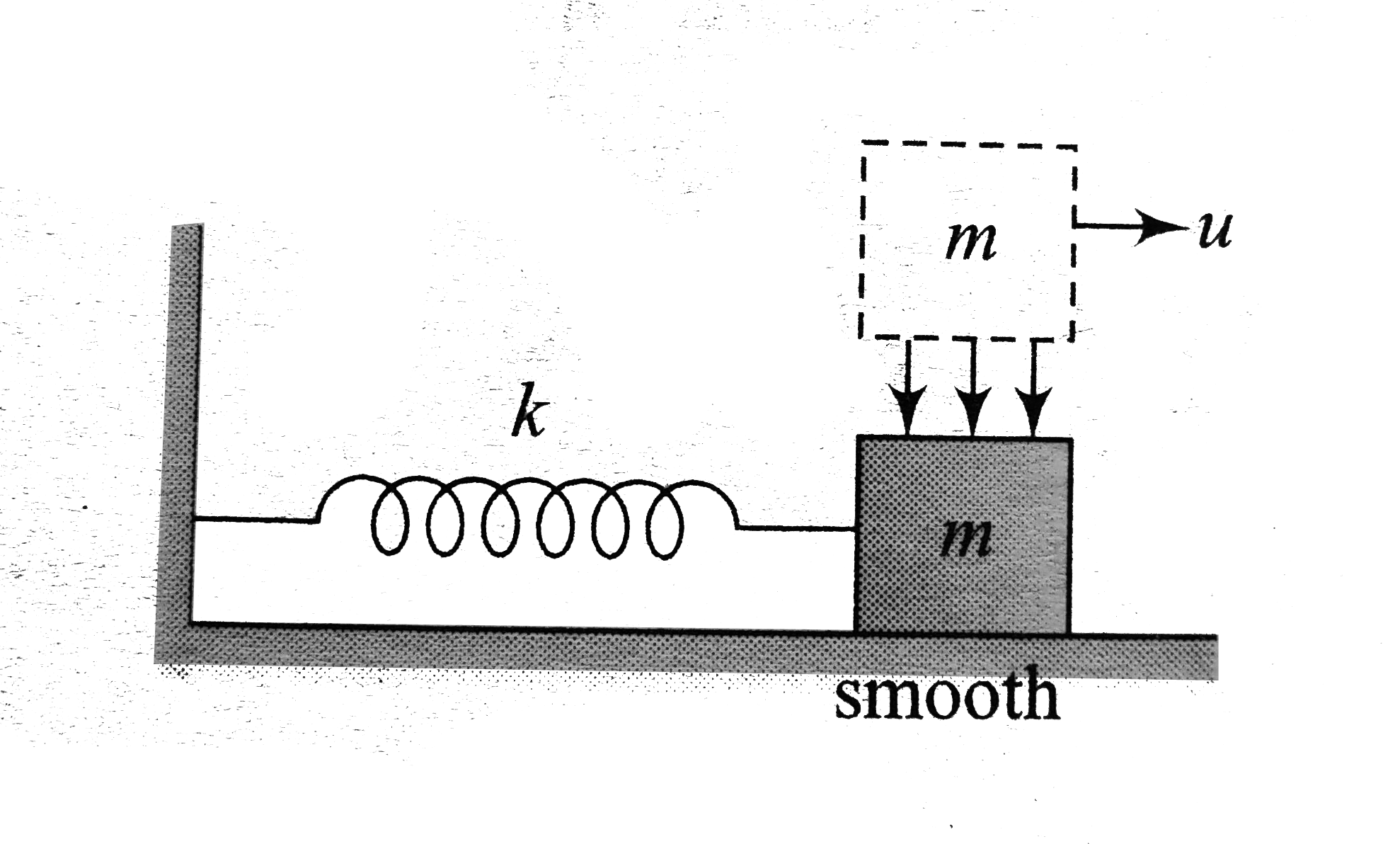 View Solution
View SolutionConsider the spring block system shown in the figure. Initially block m is in equilibrium. Then block m is displaced b y a small distance h. Find the maximum speed of the block. ltbgt
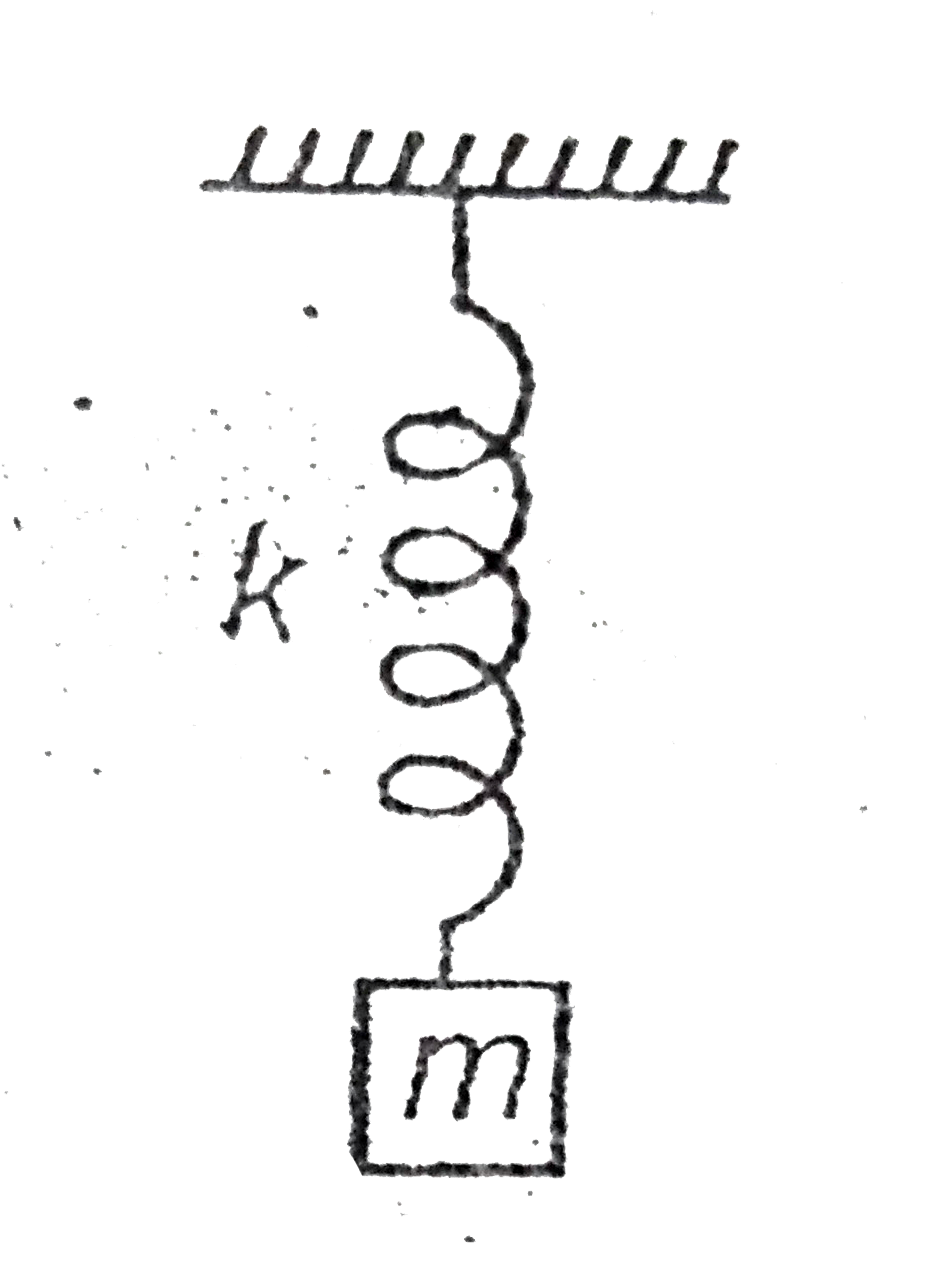 View Solution
View SolutionBlocks shown in figure-1.81 move by a distance 3 m toward left. Find the distance and direction in which the point P on string shown in figure is displaced.
 View Solution
View SolutionSpring mass system is shown in figure. Find the elastic potential energy stored in each spring when block is at its mean position. Also find the time period of vertical oscillations. The system is in vertical plane.
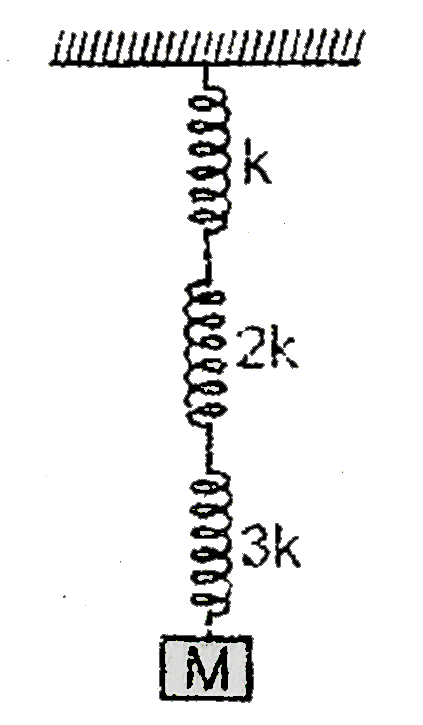 View Solution
View SolutionSpring mass system is shown in figure. Find the elastic potential energy stored in each spring when block is at its mean position. Also find the time period of vertical oscillations. The system is in vertical plane.
 View Solution
View Solution

